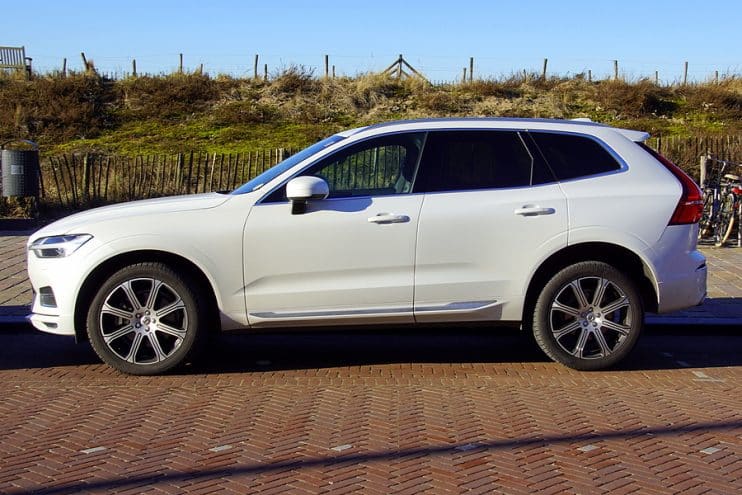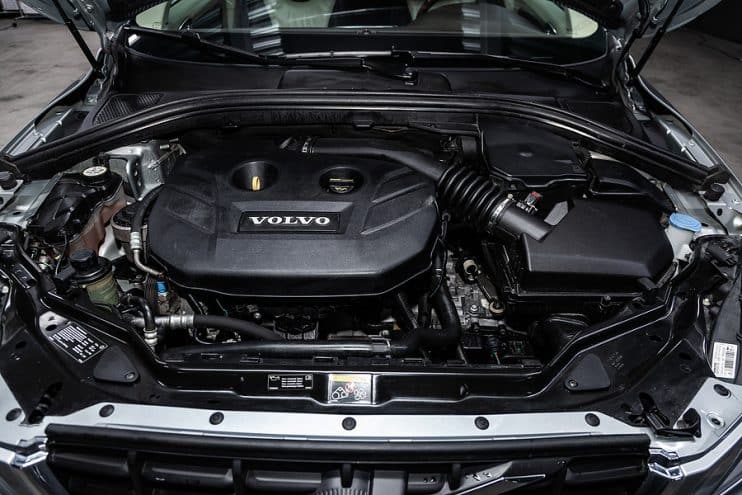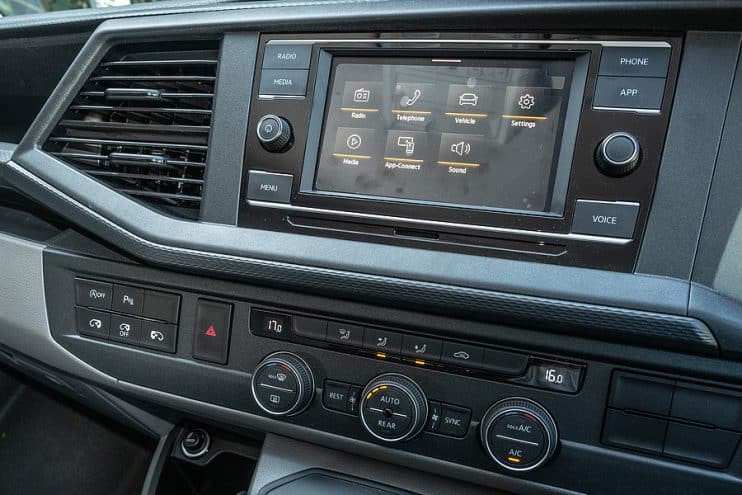
The Volvo XC60 is a popular luxury crossover SUV that Volvo has produced since 2008. Now in its second generation since a redesign in 2017, the XC60 carries on Volvo’s reputation for safety and Scandinavian styling.
The current XC60 features Volvo’s signature Thor’s Hammer LED headlights and an elegant, modern interior highlighted by a large touchscreen interface. Underneath, it packs turbocharged 2.0-litre four-cylinder engine options, delivering responsive acceleration and smooth handling. The XC60 offers customers their choice of front-wheel or all-wheel drive paired with automatic transmissions for confident control in varying conditions.
The XC60 has advanced driver assistance tech, premium audio, and updated connectivity features. Even basic XC60 models boast leather seating, panoramic moonroofs, four-zone climate control, and hands-free tailgates.
Table of contents:
- Common faults drivers and owners report with the Volvo XC60
- Is the Volvo XC60 a reliable car?
- Is the Volvo XC60 an expensive car to maintain?
Common faults drivers and owners report with the Volvo XC60
The Volvo XC60 has experienced recurring reliability trouble spots despite its many virtues. As with any vehicle, it’s a good idea to know any potential issues before you purchase a new or used Volvo XC60. Here’s a guide to the most common problems:
Loss of power steering
The XC60’s power steering system has been a sore spot for owners, with complaints of whining noises, difficulty turning, and sudden loss of power assist. Many issues stem from a problem between the steering rack and the power-steering high-pressure line.
While Volvo hasn’t issued a recall yet, there are still a few steering gremlins they need to address, maybe with the next model refresh, if not sooner.
Engine performance issues
XC60 owners don’t usually buy these SUVs for speed but expect solid reliability. However, many drivers say they experience stalling, hesitation, or rough idling issues that disrupt the driveability of the XC60. Sources say the 2010 model is the worst culprit for engine problems and carries the highest costs for fixes.
Tailgate problems
A huge inconvenience for an SUV owner is not being able to depend on your liftgate working when loaded down with gear. Many XC60 owners tell of broken tailgate motors resulting in lifting arm failure, stiff tailgates, or non-moving tailgates, particularly with models built between 2017 and 2019. By the start of 2019, more than 45,000 vehicles had been recalled because of a safety problem with the tailgate lifting arm separating from the car.
Brake issues
In March 2020, Volvo initiated a recall of nearly 750,000 vehicles worldwide due to concerns regarding faulty autonomous emergency braking (AEB) systems. The issue, identified by the Danish motoring body FDM during a road test in late 2019, impacted 736,430 cars globally, including 56,368 in the UK.
During testing, the emergency brake on a Volvo XC60 consistently failed to engage when approaching a special test pillow designed to activate the system. The affected vehicles remain safe despite this issue, as the regular braking system functions properly. However, verifying whether the recall has been addressed for any car you’re considering for purchase is essential.
Excess oil consumption
Volvo engines have a reputation for durability, not gulping down oil between changes. However, some XC60 owners are surprised that their vehicle needs extra oil more frequently, at relatively low mileage.
While not alarming, this excess oil burn requires more vigilant checking and top-offs than you might expect. You may prefer to take your vehicle to a mechanic for an oil consumption test and have any parts replaced that can help to stop leaks.

Engine fire risk
Volvo is recalling around 70,000 vehicles in the UK with 2.0-litre diesel engines due to the risk of engine fires. As of now, there is yet to be a solution available. Owners should be vigilant for any unusual odours inside the vehicle, the illumination of the engine warning light, or any hesitation in engine acceleration.
Vibrations while driving
Some owners report vibrations when travelling at 40 to 60 MPH, with a common cause being a loose foam insert inside the tyre. Vibrations can stem from other issues, too, with common culprits including imbalanced tyres, worn-out suspension components, or misaligned wheels. Brake problems like warped discs or worn brake pads can also cause vibrations.
Seatbelt safety concerns
In 2021, Volvo issued a global recall affecting about 2.2 million cars due to potential safety concerns with the seatbelts. This recall involved replacing the seatbelt pre-tensioners with fixed anchorage points, which some experts argued removed a critical safety feature.
The recall affected Volvo models built from 2006 to 2018, including previous-generation XC60s. Despite assurances from Volvo and regulatory agencies that the fix met safety standards, questions still need to be answered about the impact on safety for many owners.
Loose windscreen wipers
Volvo recalled some cars in August 2020 because their windscreen wiper arms were installed too loosely. This happened because the factory’s torque specifications for the front wiper arms nut were wrong. It meant the wiper arms could come off the vehicle, which could make it hard to see properly. The fix was to tighten the wiper arms to 38Nm, per the correct specifications.
Fuel leaks
In 2009, Volvo issued a recall for the 2010 model because the fuel rail line cover wasn’t correctly installed underneath the car, leaving the fuel line vulnerable and open to damage. The recall involved replacing the fuel line cover if needed.
Fuel pump failure
Earlier versions of the XC60 have had two recalls because of engine stalling issues. The first recall affected the 2010 model year because the software in the central electronic module didn’t signal the fuel pump electronic module properly. This caused the fuel pump to either not start or run briefly, leading to the engine stalling. To fix it, Volvo updated the software in the CEM module.

Infotainment gremlins
For prospective Volvo XC60 buyers, it’s crucial to be aware of potential issues, particularly with the electrical and infotainment systems in the 2022 model. While there haven’t been a substantial number of complaints, early reports suggest some concerning issues.
Owners have reported instances of the vehicle’s screen going blank, leading to a complete shutdown and requiring a restart to resolve. Problems with the Google operating system controlling various functions have also been reported, including app failures and random shutdowns.
Is the Volvo XC60 a reliable car?
Despite the issues above, the Volvo XC60 does have a reputation for reliability, finishing in third place out of 24 SUVs in WhatCar’s reliability survey. It has an overall rating of 97.6%, which is outstanding. Volvo is known as a brand for prioritising safety and durability in its vehicles, and the XC60’s engines are relatively trouble-free as long as you have regular maintenance checks.
Is the Volvo XC60 an expensive car to maintain?
The Volvo XC60 has higher than average maintenance costs compared to some other compact luxury SUVs in the UK market. Oil and filter changes tend to cost more, but using independent garages may lower your outlay.
Replacing individual braking components can be pricier than other cars as Volvo tends to use higher-spec braking components. However, sourcing new or used Volvo XC60 parts yourself can cut costs.
With pricier insurance costs and expensive servicing, you’re looking at around 15-20% more per year in maintenance compared to non-luxury rivals. So, it’s certainly not the most economical luxury SUV to run. But if you value safety, luxury and reliability over running costs, the XC60 remains competitive.





.png)